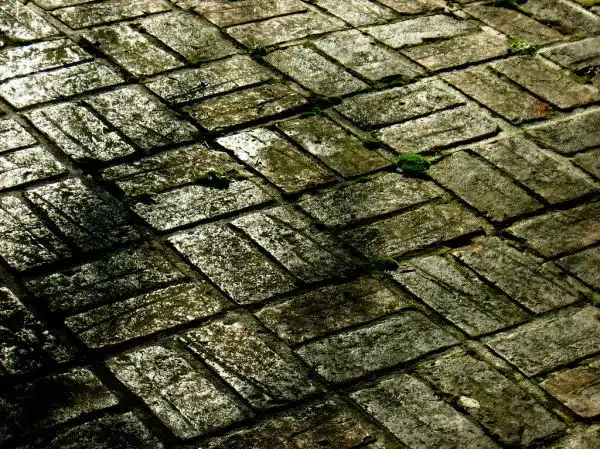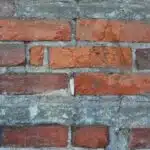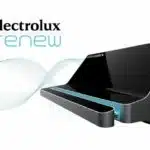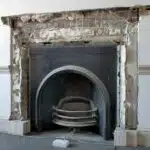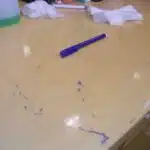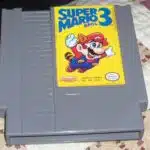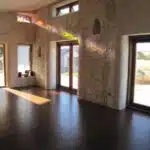Brick patios and walls are a common feature in many households across the world. They add an aesthetic appeal to the outdoor spaces and can be used for various functions, such as barbecuing, relaxing, or entertaining guests. However, with time, these brick surfaces accumulate dirt, grime, and stains that not only affect their appearance but also pose health risks to those using them. As a brick patio and wall cleaning expert, I have seen firsthand the importance of maintaining these surfaces clean to prevent damage and prolong their lifespan.
Removing stains from brick patios and walls requires expertise and proper cleaning techniques. Many homeowners make the mistake of using harsh chemicals or high-pressure washing equipment that damages the bricks’ surface. This leads to cracks, chips, or color fading that affects their overall appearance. Therefore, it is crucial to seek professional help when dealing with stubborn stains on your brick surfaces. In this article, I will share some tips on how to remove stains from brick patios and walls without causing damage or compromising their structural integrity.
Identifying Different Types Of Stains On Brick Surfaces
As a brick patio and wall cleaning expert, it is important to identify different types of stains on brick surfaces before proceeding with any cleaning method. One common cause of stains on brick surfaces is organic matter such as leaves, grass, and other plant debris. When left unattended, these materials can decompose and leave behind unsightly stains. Another common cause of stains on brick surfaces is rust, which can result from metal objects left in contact with the surface for extended periods.
Prevention tips for organic matter stains include regular sweeping and removal of plant debris from the surface. It is also advisable to trim back any nearby trees or bushes that may be shedding onto the brick surface. Rust stains can be prevented by ensuring that metal objects are not left in contact with the surface for prolonged periods. If metal furniture must be placed on the brick surface, it is recommended to use protective pads or coatings to prevent rust stains.
Identifying different types of stains on brick surfaces is essential in determining the appropriate cleaning method to use. Before proceeding with any cleaning process, it is important to prepare the area by removing any loose debris such as leaves and dirt from the surface. This can be done using a broom or a leaf blower. Once the area has been cleared of loose debris, it should be rinsed down with water to remove any remaining dirt or dust particles.
Preparing The Area For Cleaning
Gathering Materials: Appropriate tools and cleaning solutions should be obtained in order to effectively remove stains from brick patios and walls.
Protecting Surrounding Areas: Protective clothing, such as gloves and eye-wear, should be worn to prevent any contact with the cleaning solution.
Assessing Damage: A thorough assessment of the area should be made in order to determine the type of stain, the material affected and the severity of the damage.
Gathering Materials
When it comes to cleaning brick patios and walls, the first step is to gather all the necessary materials. Choosing eco-friendly materials is always a good idea as they are not only better for the environment but also safer for your health. There are plenty of cost-effective alternatives available in the market that can help you achieve a spotless finish without breaking the bank.
Start by assessing the type of stain you’re dealing with and then choose a cleaner accordingly. For instance, if you’re dealing with mildew or mold, look for a cleaner that contains hydrogen peroxide or vinegar. If you have grease stains, opt for a degreaser. Make sure that the cleaner you choose is safe for use on brick surfaces.
Next, gather your supplies such as gloves, safety goggles, scrub brushes, pressure washer (if available), and buckets. It’s important to wear protective gear while cleaning as some cleaners contain harsh chemicals that can harm your skin and eyes. If you don’t have access to a pressure washer, consider renting one or using a hose with a high-pressure nozzle attachment instead.
In summary, preparing yourself with the right materials is crucial when it comes to cleaning brick patios and walls effectively. By choosing eco-friendly materials and cost-effective alternatives, you can achieve excellent results without damaging the environment or spending too much money. Don’t forget to wear protective gear while cleaning and assess your stain type before choosing a suitable cleaner.
Protecting Surrounding Areas
Protective measures are essential when it comes to cleaning brick patios and walls. Before starting the cleaning process, it’s important to protect the surrounding areas to minimize damage. One of the easiest ways to do this is by covering nearby plants, furniture, and other items with plastic sheeting or drop cloths. This will prevent any cleaning solution or debris from splattering onto them and causing damage.
Another protective measure you can take is to wet down the surrounding areas before starting the cleaning process. This will help prevent any chemicals or dirt from spreading beyond the designated area. Additionally, you should avoid using a pressure washer on delicate surfaces such as windows, light fixtures, and vents. Instead, use a hose with a gentle attachment or scrub brush to clean these areas.
When it comes to protecting yourself while cleaning brick patios and walls, wearing protective gear such as gloves and safety goggles is crucial. It’s also important to read the labels on all cleaners used during the process and follow their instructions carefully. By taking these protective measures, you can minimize damage to your surroundings and ensure that you stay safe while achieving a spotless finish on your brick patio or wall.
Assessing Damage
As a brick patio and wall cleaning expert, preparing the area for cleaning is crucial in achieving a spotless finish without causing any damage. Aside from protecting the surrounding areas and yourself while cleaning, assessing damage before starting the process is also important. Assessing damage involves inspecting the bricks for any cracks or chips that may have occurred over time.
Repairing cracks should be done before starting the cleaning process to prevent further damage. Cracks can easily trap water which can cause the bricks to expand and contract, leading to more cracks and even crumbling. To repair cracks, first, remove any loose debris or dirt from the crack using a wire brush or compressed air. Next, fill the crack with a mortar mix or concrete patching compound, depending on the severity of the crack. Allow it to dry completely before proceeding with the cleaning process.
Assessing damage and repairing cracks will ensure that your brick patio or wall will not only look clean but also stay strong and durable for years to come. By taking these steps before starting the cleaning process, you are also preventing costly repairs in the future due to neglecting minor damages. Remember that prevention is always better than cure when it comes to keeping your outdoor space in top condition!
Choosing The Right Cleaning Solution
After preparing the area for cleaning, the next step is to choose the right cleaning solution for removing stains from brick patios and walls. There are many options available in the market, including DIY solutions and professional services. However, before making a decision, it is important to weigh the benefits of each option.
Benefits of DIY:
- Cost-effective: DIY solutions can be made using readily available household items, which can save money on hiring professional services.
- Control over ingredients: With DIY solutions, you have control over the ingredients used in making the cleaning solution. This allows customization according to specific needs and preferences.
- Satisfaction of doing it yourself: Completing a task through your own efforts can provide a sense of accomplishment and satisfaction.
Professional Services Comparison:
- Expertise: Professional cleaning services have years of experience and knowledge in dealing with different types of stains on brick surfaces.
- High-quality equipment: Professionals use specialized equipment that can clean brick surfaces effectively without causing damage.
- Time-saving: Hiring professionals can save time as they work efficiently to complete tasks quickly.
It is important to note that not all cleaning solutions are suitable for all types of stains or surfaces. Therefore, before applying any solution, it is recommended to test it on a small area first. This will ensure that the solution does not cause any damage or discoloration to the surface. Once you have found a suitable cleaning solution and tested it on a small area, proceed with cleaning the entire surface following the appropriate instructions.
Transitioning into testing the cleaning solution on a small area, it is crucial to mention that skipping this step could result in irreversible damage to your brick surface. In order to avoid this costly mistake, always test your chosen cleaning solution on an inconspicuous spot beforehand.
Testing The Cleaning Solution On A Small Area
Spot cleaning is a crucial step in removing stains from brick patios and walls. Before applying the cleaning solution, it is important to test it on a small area first. This will help you determine if the solution is effective and safe for use on your patio or wall.
One of the benefits of spot cleaning is that it allows you to identify any potential problems before they become bigger issues. For example, if the cleaning solution causes discoloration or damage to the surface, you can avoid using it on a larger area. Additionally, spot cleaning can save time and money by allowing you to focus only on the areas that need attention.
It is also important to wear protective gear while testing the cleaning solution. Gloves, safety glasses, and a mask should be worn to protect your skin, eyes, and respiratory system from any harsh chemicals in the cleaning solution. By taking these precautions, you can ensure your safety while still effectively testing the solution on your patio or wall.
Applying The Cleaning Solution To The Stained Area
After conducting a small test of the cleaning solution on a small area, it’s time to move on to the next step – applying the solution to the stained area. Before jumping straight into action, it’s important to prepare yourself and your cleaning tools. Make sure you have all necessary equipment such as gloves, goggles, and a mask. Additionally, take note of weather conditions before starting as humidity or rain can affect the cleaning process.
Applying techniques are crucial in removing stains from brick patios and walls. First, mix the cleaning solution according to instructions and apply it generously onto the affected area. It is best practice to work in sections, making sure not to miss any spots or leave any areas untreated. Allow the solution to sit for approximately 10-15 minutes or as directed by the manufacturer.
Once time has passed, grab a soft-bristled brush and begin scrubbing away at the stained area. Take care not to use hard-bristled brushes as this may cause damage or discoloration to your brick surface. Continue scrubbing until all visible stains have been removed. Rinse off with water using a pressure washer or garden hose until there is no longer any residue left behind.
Transitioning into our subsequent section about scrubbing, remember that this step is crucial in ensuring that all stains are completely removed from your brick patio or wall surface. By following these best practices, you’ll be able to fully restore your outdoor space back to its original beauty without causing any damage along the way.
Scrubbing The Stained Area With A Soft-Bristled Brush
When it comes to cleaning stains from brick patios and walls, using a soft-bristled brush is crucial in ensuring that the surface is not damaged. It is important to choose the right brush type for the job, as a hard-bristled brush can be too abrasive and cause damage to the brick. A soft-bristled brush, on the other hand, will effectively remove stains without damaging the surface.
When scrubbing the stained area with a soft-bristled brush, it is important to use proper cleaning techniques. Start by wetting the stained area with water and then apply a cleaning solution. Avoid using harsh chemicals or bleach as this can cause further damage to the surface. Gently scrub the area with the soft-bristled brush in circular motions, working from top to bottom.
As you scrub, periodically rinse the brush with water to remove any dirt or debris that may have accumulated on its bristles. Once you have finished scrubbing the stained area, rinse it thoroughly with water to remove any remaining cleaning solution. Be sure to rinse well and avoid leaving any residue behind. With these techniques in mind, you can effectively remove stains from your brick patio or wall without causing damage to its surface.
Rinsing The Surface With Water
After scrubbing the stained area with a soft-bristled brush, it is crucial to rinse the surface with water. In fact, rinsing the surface with water is just as important as scrubbing it with a brush. Not only does it help remove any remaining dirt and grime, but it also prepares the surface for the next step.
One important factor to consider when rinsing brick patios and walls is adequate water pressure. Using a hose with low water pressure may not be enough to fully rinse away all of the cleaning solution and dirt residue. On the other hand, using a high-pressure washer can damage the brick surface and cause permanent marks. Therefore, it is essential to use an appropriate amount of water pressure that effectively removes any remaining solution without causing harm.
Another critical aspect of rinsing brick surfaces is using environmentally friendly cleaning solutions. While many commercial cleaning solutions are effective at removing stains, they often contain harsh chemicals that can harm both humans and the environment. By using eco-friendly products, not only do you avoid harmful toxins, but you also contribute towards protecting our planet’s natural resources.
To ensure proper cleaning of brick patios and walls, it is vital to rinse the surface thoroughly with water while maintaining adequate pressure. Additionally, using eco-friendly cleaning solutions can significantly reduce your impact on the environment while keeping your family safe from harmful chemicals. Once rinsed properly, proceed to dry the surface with a clean towel before moving onto any final touches or additional steps in your brick cleaning process.
Drying The Surface With A Clean Towel
After rinsing off the cleaning solution and remaining stains with a hose, it’s important to dry the surface thoroughly. A clean towel is an effective way to do this, especially for smaller areas like patios or walls. Simply use a clean, dry towel to wipe away any excess water from the surface. This will not only help prevent any remaining stains from setting in but also avoid slipping hazards.
However, if you’re dealing with a larger area or don’t have access to a sufficient number of towels, there are alternative drying methods available. One such method is air drying. By allowing the surface to air dry naturally, you can avoid potential damage that may be caused by using too much force when wiping with a towel. Additionally, air drying provides benefits such as being eco-friendly and cost-effective.
Benefits of air drying include better preservation of surfaces and materials, reduced energy consumption, and improved indoor air quality. While it may take more time than using a towel or other methods of drying, it’s worth considering as an option for your brick patio or wall cleaning project. In addition to preserving the beauty and integrity of your surfaces, choosing environmentally friendly options can help us all serve our communities better and contribute towards sustainable living practices.
As we move on to removing oil and grease stains from brick surfaces in the next section, keep in mind that proper drying techniques are essential before moving on to any further steps. Whether you choose to use a clean towel or opt for air drying methods for your brick patio or wall cleaning project, remember that taking care during each step of the process will yield better results overall.
Removing Oil And Grease Stains From Brick Surfaces
To maintain the beauty of your home’s brick surfaces, it is essential to keep them clean and free from stains. Oil and grease stains are some of the most common types of stains that can be challenging to remove. However, with the right techniques, you can get rid of them without damaging the brick surface.
Preventing stains is always easier than removing them, so it is important to take preventive measures whenever possible. If you are working on a car or other machinery near your brick surface, use a tarp or drop cloth to prevent oil or grease spills from reaching the brick. Additionally, placing mats or rugs in areas where there is high foot traffic can help catch any excess oil or grease before it reaches your brick surface.
When it comes to removing oil and grease stains from brick surfaces, using natural solutions can be effective while also being safe for your family and pets. One such solution is baking soda mixed with water to form a paste. Apply this paste onto the stain and let it sit for several hours before scrubbing it off with a stiff brush and rinsing with water. Another natural solution is vinegar mixed with water in equal parts. Apply this mixture onto the stain and let sit for several minutes before scrubbing and rinsing off.
Next up, tackling rust and mineral stains on brick surfaces requires a different approach.
Tackling Rust And Mineral Stains On Brick Surfaces
Rust and mineral stains can be a common issue on brick surfaces, especially those exposed to moisture. These stains are not only unsightly but also challenging to remove. DIY methods such as using vinegar or baking soda may work for light stains, but for more severe cases, it is best to hire experts.
When it comes to hiring experts, it is essential to choose professionals who have experience in cleaning brick surfaces and are knowledgeable about the appropriate cleaning agents and techniques. They can use specialized equipment like high-pressure washers and chemicals that are safe for both the surface and the environment. Moreover, they can provide aftercare recommendations to prevent future staining.
In conclusion, dealing with rust and mineral stains on brick surfaces requires expertise and proper cleaning techniques. While DIY methods may work for light stains, hiring experts is highly recommended for severe cases. It is crucial to choose professionals who understand the nature of the stain and know how to clean it effectively without damaging the surface. In the next section, we will discuss dealing with mold and mildew on brick surfaces.
Dealing With Mold And Mildew On Brick Surfaces
Mold and mildew are common problems in damp environments, and brick surfaces are no exception. These fungi can damage the surface of the brick, causing discoloration and overall deterioration if left untreated. It is essential to address mold and mildew as soon as it appears to prevent long-term damage.
To clean mold and mildew from brick surfaces, there are several cleaning solutions available on the market. However, not all of them are created equal. Some may contain harsh chemicals that can damage the brick’s surface or harm nearby plants, while others may not be strong enough to remove stubborn stains. Before using any cleaning solution, it is crucial to read its label carefully and follow its instructions.
When comparing cleaning solutions for mold and mildew on brick surfaces, consider factors such as effectiveness, safety for both humans and the environment, ease of use, and cost-effectiveness. Some popular options include bleach-based products, vinegar-based solutions, commercial cleaners specifically designed for brick surfaces, and natural remedies such as baking soda or hydrogen peroxide. Each has its pros and cons; therefore, it is essential to choose a product that best suits your needs while ensuring that it does not harm the brick or surrounding vegetation.
Preventing mold and mildew from growing on your brick surfaces in the first place is key to avoiding future cleaning efforts altogether. In addition to regularly cleaning your patios or walls with a gentle soap solution or a pressure washer, you can also take steps such as improving drainage systems around your property or trimming back overhanging trees or shrubs that may block sunlight from reaching your bricks. By taking preventative measures, you can ensure that your beautiful brick surfaces stay healthy for years to come.
Preventing Future Stains On Brick Surfaces
One of the best ways to keep your brick patio and walls looking great is to prevent discoloration from occurring in the first place. While some staining is unavoidable, especially in high traffic areas or where there is a lot of moisture, there are steps you can take to minimize the risk of future stains. By taking a few simple precautions and engaging in long term maintenance practices, you can keep your brick surfaces looking like new for years to come.
First and foremost, it’s important to avoid using harsh chemicals or abrasive materials when cleaning your brick surfaces. These substances can damage the surface of the brick and make it more prone to staining in the future. Instead, opt for gentle cleaning solutions that are specifically designed for use on brick surfaces. Additionally, be sure to use soft-bristled brushes or sponges when scrubbing your bricks; this will help prevent scratches that can trap dirt and grime and lead to discoloration over time.
Another key aspect of preventing future stains on your brick surfaces is regular maintenance. This means keeping an eye out for potential problem areas and addressing them before they become major issues. For example, if you notice water pooling on your patio after a rainstorm or snowfall, take steps to improve drainage by adding additional gravel or installing a French drain system. Similarly, if you see moss or algae growth on your bricks, treat it with a mild solution of bleach and water before it has a chance to spread.
In summary, preventing discoloration on your brick surfaces requires both careful attention to cleaning methods and long term maintenance practices. By avoiding harsh chemicals and abrasive materials when cleaning your bricks, using soft-bristled brushes or sponges when scrubbing them clean, keeping an eye out for potential problem areas like poor drainage or moss growths early on so that they don’t become major issues down the line–you’ll be able to enjoy beautiful, stain-free brick surfaces for years to come. In the next section, we’ll discuss the benefits of hiring professional brick cleaning services and how they can help keep your bricks looking their best.
Hiring Professional Brick Cleaning Services
Did you know that a study conducted by the National Association of Home Builders revealed that homeowners prioritize outdoor living spaces? The survey showed that patios, decks, and porches were among the top features buyers look for in a house. However, maintaining these areas can be challenging, especially if you have brick patios and walls. While there are several DIY methods available to clean stains from brick surfaces, hiring professional brick cleaning services has several benefits.
One of the advantages of hiring professionals is cost-effectiveness. Cleaning products and equipment can be expensive, and some homeowners end up spending more money trying to remove stubborn stains without success. Professional cleaners have access to industrial-grade tools and solutions that can effectively clean your brick surfaces without damaging them. Additionally, they have the expertise needed to handle different types of stains and prevent damage to your property.
Another benefit of professional brick cleaning services is their ability to save time. Cleaning brick patios and walls can take hours or even days depending on the size of your property. Professionals use efficient cleaning techniques that reduce cleaning time significantly while maintaining high-quality results. This means you can focus on other important activities while leaving the experts to do what they do best.
In summary, hiring professional brick cleaning services is a cost-effective way of maintaining your outdoor living space while saving time. They offer superior results compared to DIY methods as they use specialized equipment and solutions tailored for each job’s unique requirements. However, before making the decision to hire professionals or go DIY, it’s essential first to weigh both options’ pros and cons carefully.
Diy Vs. Professional Brick Cleaning: Pros And Cons
When it comes to cleaning your brick patio or wall, you have the option of doing it yourself or hiring a professional. Both options have their pros and cons, which we will discuss in this section.
Pros of Hiring a Professional:
- Expertise: Professionals have experience and knowledge on how to properly clean different types of brick surfaces without causing damage.
- Equipment: Professionals have access to industrial-grade equipment that can effectively remove tough stains and dirt.
- Time-saving: Hiring a professional can save you time and effort, as they will take care of the cleaning process from start to finish.
Cons of Hiring a Professional:
- Cost: Hiring a professional can be more expensive than doing it yourself.
- Scheduling: You may need to work around the schedule of the cleaning company, which may not be convenient for you.
- Lack of control: When you hire a professional, you are relying on them to do the job correctly and may not have as much input or control over the process.
Equipment Needed for DIY Brick Cleaning:
- Power washer: A power washer is essential for removing built-up dirt and grime from your brick surfaces.
- Cleaning solution: You will need a cleaning solution specifically designed for brick surfaces.
- Scrub brush: A scrub brush will help loosen any stubborn stains or dirt that the power washer cannot remove.
In conclusion, both DIY and professional brick cleaning have their advantages and disadvantages. If you have the time, patience, and experience needed for DIY cleaning, it can save you money while still achieving good results. However, if you want guaranteed results without having to put in the effort yourself, hiring a professional is your best option. Regardless of which route you choose, maintaining the beauty and integrity of your brick surfaces is crucial for longevity and aesthetic appeal.
Conclusion: Maintaining The Beauty And Integrity Of Your Brick Surfaces
Maintaining the beauty and integrity of your brick surfaces is essential to ensure the longevity of your property. Brick surfaces require regular cleaning, which can be done through DIY methods or professional services. DIY brick cleaning tips include using a mixture of warm water and soap, along with a stiff-bristled brush to scrub away dirt and grime. However, it is important to note that DIY methods may not be effective in removing tough stains and may damage the surface if not done correctly.
On the other hand, professional brick cleaning services offer numerous benefits. Professional cleaners use specialized equipment and products that are safe for brick surfaces. They have experience in dealing with various stains, including oil, grease, mold, and mildew. Moreover, they can identify potential issues such as cracking or deteriorating mortar joints that could cause further damage to your property.
In conclusion, maintaining brick surfaces requires regular cleaning to preserve their beauty and structural integrity. While DIY methods may work for small areas or minor stains, it is advisable to seek professional services for tougher stains or larger areas. Hiring professionals will not only save time but also ensure that the job is done effectively without causing any damage to your property. Remember that taking care of your brick surfaces is an investment in your property’s value and aesthetics.
Conclusion
In conclusion, maintaining the beauty and integrity of your brick surfaces requires regular cleaning and proper stain removal techniques. Identifying different types of stains on brick surfaces is crucial before choosing a cleaning solution. Preparing the area for cleaning is also important to avoid damaging the surface. Testing the cleaning solution on a small area should be done to ensure it works effectively.
Applying the chosen cleaning solution to the stained area and preventing future stains on brick surfaces will keep them looking great for years to come. Hiring professional brick cleaning services can save time and effort, but DIY methods are also effective if done correctly. Nonetheless, always choose a method that suits your needs best.
Remember, keeping your brick surfaces clean and free from stains not only adds aesthetic value but also prolongs their lifespan. So go ahead, use these tips to get rid of those stubborn stains and let your brick patio or wall shine like new again! Ultimately, as they say – “cleanliness is next to godliness” – so take care of your bricks today and reap the benefits tomorrow.
Image Credits
- “Brick Patio Design 2” by edillalo (featured)

